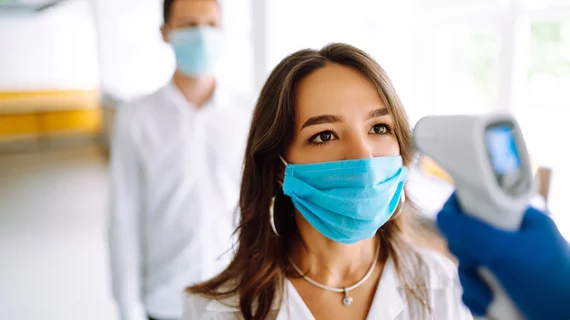A COVID silver lining: Pandemic-related workflow changes produce 23% drop in imaging wait times
While the COVID-19 pandemic has posed considerable challenges to the radiology profession, it may have also produced a few positives, too, according to an analysis published Monday.
The crisis has forced many providers to implement workflow changes that include screening patients when they schedule an appointment or encouraging them to complete registration forms online. At NYU Langone Health in New York City, these practice modifications have resulted in measurable efficiency gains, experts wrote in Academic Radiology.
Across the system’s 17 busiest outpatient imaging centers, NYU has seen a 23% drop in pre-exam wait times (or about 6.8 minutes), with patients’ overall time spent on-site dropping by 15% (8 minutes).
“This higher patient throughput is beneficial because it helps ensure social distancing and safety for patients and staff and allows for higher patient capacity and possible increased revenue in the future using the same resources when the pandemic is over,” Gregory Chang, MD, MBA, associate chair of outpatient imaging and strategy, and colleagues wrote Jan. 4.
For their study, Chang et al. analyzed data from NYU Langone Health’s electronic health record and analytics software, tallied in February 2020, before the interventions, and June 2020, after implementation. Other practice changes included limiting wait room capacity, using text messages to notify patients about delays, curbing dress room use, and shortening imaging protocols.
MRI saw the biggest drop in pre-exam wait times at about 28.4%, followed by ultrasound (25.3%), mammography (23.9%), x-ray (22.8%) and CT (16.5%). Meanwhile, MR exams were about 9.7%, or 3.5 minutes, shorter after the changes, and NYU saw those using the digital patient portal leap from 56% up to more than 70% in June. Plus, patients completing electronic forms prior to their visits nearly doubled, from almost 25% up to 47%.
The study has some limitations, Chang and colleagues noted. However, they stand by the results, and believe “all of these are measures that could be implemented to some degree by any radiology practice.” They encouraged peers to similarly strive to find efficiencies now and beyond the public health crisis.
“It is important to note that improvements in workflow to improve the patient experience should not be limited to times of crisis such as the COVID-19 pandemic but should be a constant goal of all imaging centers,” the authors advised.
You can read more of the analysis in the Academic Radiology here.

